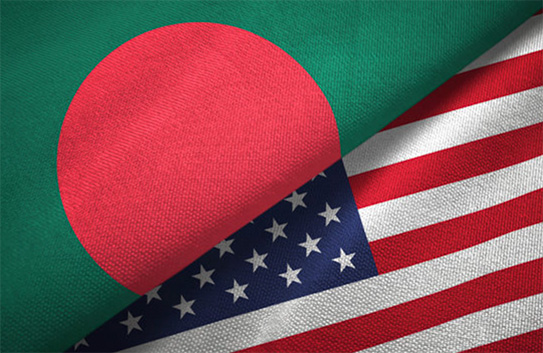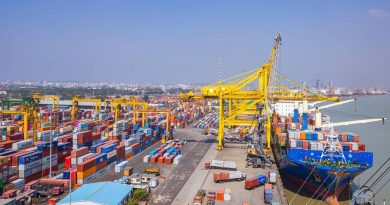The Bangladeshi delegation departed for the United States yesterday to engage in the third and final round of talks with the Trump administration, aiming to secure a reduced tariff rate on Bangladeshi exports.
Scheduled from July 29 to 31, the negotiations come ahead of the planned imposition of a 35 percent tariff on Bangladeshi products entering the US market starting August 1.
Commerce Secretary Mahbubur Rahman expressed cautious optimism before leaving the country, sharing his views over the phone. “We are hopeful of a much lower tariff rate as the discussions so far have taken place in a congenial atmosphere,” he said. “I see a positive sign in the negotiations.”
Rahman indicated that the tariff rate for Bangladesh could fall between 10 and 20 percent, comparable to other countries that have already secured revised rates. For example, Vietnam negotiated a 20 percent tariff, Indonesia and the Philippines 19 percent, Japan 15 percent, the UK 10 percent, and the European Union 15 percent.
To strengthen its bargaining position, Bangladesh has revised its negotiation strategy, including an offer to purchase 25 US-made aircraft instead of the originally planned 14. The country has also signed agreements to import 3.5 million tonnes of wheat and liquefied natural gas (LNG) from the US over the next five years.
Rahman explained that apart from narrowing the bilateral trade gap, Bangladesh aims to expand its aircraft fleet for future needs. He added that Boeing’s delivery waiting list is already long, making early orders essential. “Vietnam has ordered 100 Boeing planes, Indonesia 50,” he said.
The purchase agreements are flexible, allowing Bangladesh to take delivery of goods beyond the initially agreed timelines, Rahman noted.
He also emphasized that these deals would help meet domestic demand, citing wheat production as an example. “Local wheat production is insufficient, so the US will become a major supplier for us,” he said.
Despite these positive signs, skepticism remains among some private sector representatives. One garment exporter assisting the delegation, who wished to remain anonymous, said, “I don’t think we will get anything less than 25 percent. That’s my gut feeling.”
Zaidi Sattar, chairman of the Policy Research Institute of Bangladesh (PRI), pointed out that Bangladesh’s success as a major garment exporter to the US market hinges on achieving a favorable tariff agreement.
“For Bangladesh, a 20 percent tariff would be acceptable,” he said. However, he warned of potential challenges, noting that Vietnam faces a 40 percent tariff on goods transshipped from China due to import content rules.
“Vietnam imports a lot of Chinese raw materials, which may attract higher US tariffs,” Sattar explained. “In that respect, Bangladesh could gain a competitive advantage with a 20 percent duty.”
“I remain hopeful based on the negotiators’ optimism. Bangladesh’s tariff rate may fall between 10 and 20 percent,” he added.
Masrur Reaz, chairman of Policy Exchange Bangladesh, shared a similar positive outlook, suggesting a 15 percent tariff deal is achievable and would be very beneficial for Bangladesh.
“I am hopeful and optimistic after the second round of negotiations, as Bangladesh is now much better prepared and strategic,” he said.






